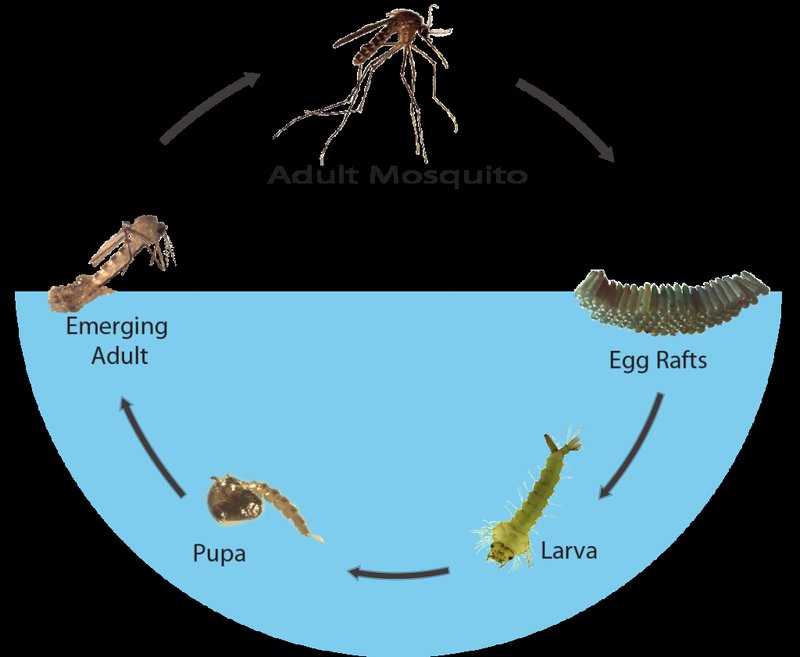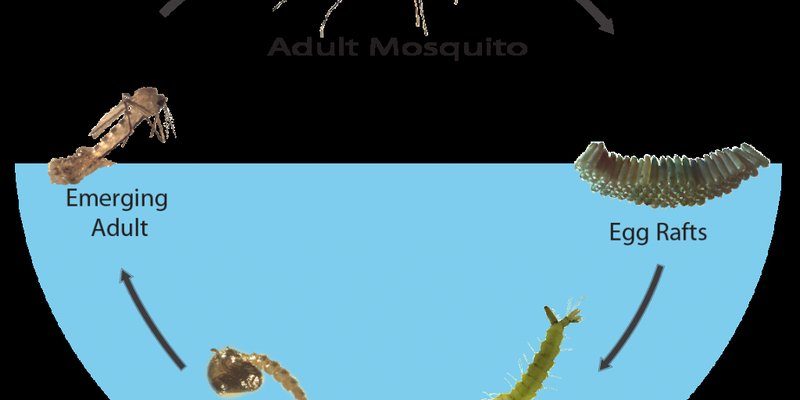
Just like any other creature, mosquitoes have their own way of growing up. The transformation they undergo can be likened to a caterpillar becoming a butterfly—a process that’s both amazing and crucial for their survival. From laying eggs to maturing into adults, each step has its own challenges and triumphs. And, trust me, understanding this lifecycle can help us manage mosquito populations better and keep those pesky bites at bay.
1. Introduction To Mosquito Eggs
Mosquitoes start their lives as tiny, often barely visible eggs. In fact, if you’ve ever seen a small puddle or a body of stagnant water, there’s a good chance you’ve seen the eggs without even realizing it. Female mosquitoes are the ones who lay these eggs, typically a few days after they’ve had a blood meal, which provides them with the necessary nutrients to produce eggs. They can lay anywhere from 100 to 300 eggs at a time!
These eggs are usually laid in clusters on the surface of standing water, like ponds, marshes, or even your backyard birdbath. Interestingly, they can survive in dry conditions for months, waiting until the right conditions (like water) come along to hatch. It’s nature’s way of ensuring that the next generation of mosquitoes has the best chance of survival once those eggs are activated.
2. The Hatching Process
Once the eggs are in water, it typically takes about 24 to 48 hours for them to hatch, depending on the temperature and environmental conditions. When the time is right, tiny larvae emerge, often called “wigglers” due to their wiggly movements in the water. At this stage, they’re incredibly small, usually measuring just a few millimeters in length. If you’ve ever watched them move through the water, you’ve seen a preview of the energy-packed life they have ahead of them.
These larvae live right below the water’s surface, filtering food, primarily algae, and organic material. They breathe through a siphon, much like a straw, which allows them to take in air while staying submerged. It’s a bit like being in a swimming pool where you can take a breath without ever needing to come up for air. It’s a pretty neat survival tactic!
3. The Larval Stage
The larval stage can last anywhere from a few days to a couple of weeks, depending on temperature and food availability. Mosquito larvae actually go through several molts during this time, typically four in total, before reaching the next stage of their lifecycle. Each time they molt, they shed their skin and grow larger, preparing for the transformation ahead.
During this stage, they’re not just eating; they’re also growing and developing the features that they’ll need as adults. Surprisingly, these larvae are quite vulnerable to predators, including fish and other aquatic animals, making it a critical time for survival. Here’s the thing: while they’re growing, they need enough food and a safe environment to thrive. If conditions are poor, their growth can be stunted, leading to fewer adult mosquitoes down the line.
4. Pupation: The Transformation Begins
Once the larvae have matured, they enter a stage called pupation. This is where the magic happens. The larvae find a safe spot, often floating at the water’s surface, and form a protective casing around themselves. This pupal stage usually lasts about 1 to 4 days, depending on water temperature and environmental conditions. It’s a bit like going into a cocoon; the larvae are quiet and still, undergoing significant changes inside.
During pupation, the larvae’s body begins transforming into an adult mosquito. It’s kind of mind-boggling when you think about it—while they seem inactive, they’re actually reworking their entire structure. Their legs, wings, and even their mouthparts are developing in preparation for the day they emerge. This stage can be quite precarious, too, as they have to avoid predators that might be lurking nearby.
5. Emerging As Adults
After a few days in the pupal stage, the freshly transformed adult mosquito finally emerges from its casing—a thrilling moment in its lifecycle! At first, the new adult is a bit damp and its wings are crumpled. But don’t worry; it only takes a few minutes for its wings to dry out and expand, allowing it to take flight for the first time. Isn’t that fascinating?
Once fully matured, adult mosquitoes are ready to begin their life cycle again. They typically live for about two weeks to a month, depending on the species and environmental conditions. Female mosquitoes need to feed on blood to develop their eggs, while males primarily feed on nectar. It’s a bit of a love-hate relationship, right? While males are mostly harmless, females are the ones we often think of when dealing with itchy bites.
6. The Importance of Their Lifecycle
Understanding the lifecycle of a mosquito is vital for several reasons. For one, it helps us develop better strategies for controlling mosquito populations and preventing diseases they might carry, like malaria or Zika virus. By knowing where and how they breed, we can take targeted actions, such as eliminating standing water or introducing natural predators.
Additionally, knowing that mosquitoes are at their most vulnerable during their larval and pupal stages allows us to find effective ways to mitigate their growth. For example, using biological controls, such as adding fish to ponds that eat mosquito larvae, can effectively reduce their numbers. It’s a little like an ecosystem balancing act; when we understand who’s involved and how, we can create a healthier environment for everyone.
7. Conclusion: A Cycle of Life
As you can see, the lifecycle of a mosquito is quite remarkable, filled with transformations and challenges. From tiny eggs to buzzing adults, each stage plays a crucial role in their survival. While they may not be the most beloved creatures, understanding their lifecycle provides important insights into their behavior and habits.
So next time you find yourself swatting away a mosquito, you might appreciate the journey it took to become that pesky little bug. By understanding how they grow and develop, we can take better steps to manage their populations and protect ourselves from their bites. The lifecycle of a mosquito is not just a story of survival; it’s a reminder of the delicate balance in our ecosystems and how we fit into that narrative.

